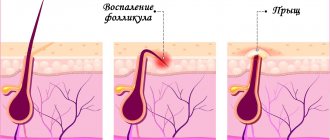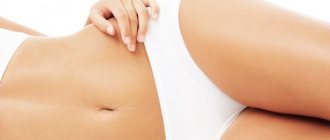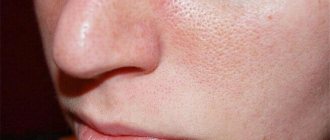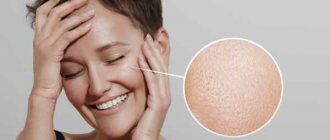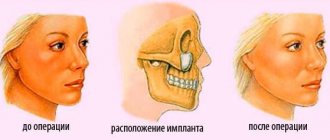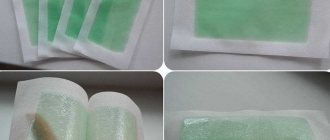The problem of unwanted hair on the face and body worries almost every representative of the fair sex. Fortunately, today there are many different methods of depilation and hair removal. We often prefer home hair removal methods, caring about saving money and time.
- 2 Getting rid of unwanted hair on the body
2.1 Photo gallery: the most popular hair removal products - 2.2 Video: overview of body depilation methods at home
- 3.1 Video: how to solve the problem of ingrown hairs
- 5.1 Table: characteristics of alternative depilation products
Features of facial depilation
Unwanted facial hair is mainly removed mechanically. It is not difficult to master methods for eliminating the problem at home. With this kind of defects on the face you can do the following:
- shave, although this is extremely undesirable, because new hairs will be more noticeable and harsher;
- pull out with tweezers (near the eyebrows, above the lip);
- remove with depilator;
- stick on a special patch.
You can treat the hairs with depilatory cream or products offered by “folk cosmetology”, for example, hydrogen peroxide . Bleached hair will not be as noticeable as before.
It is highly undesirable to shave facial hair; it is better to use depilatory cream
Popular questions
Girls and women who are trying a new method of depilation for the first time ask the same questions:
- Why does hair grow ingrown after depilation? Hair grows only in cases where a woman neglects the basic rules of skin care before and after the procedure. Be sure to scrub the skin before depilation and lubricate it with an emollient cream or oil after. When the skin is soft, hair grows easily and does not cause problems.
- How to get rid of ingrown hairs after depilation? Regularly care for your body skin, exfoliate and use nourishing lotion or milk.
- How to remove irritation after depilation? Apply moisturizer to your skin regularly. Irritation is relieved by Panthenol spray or ointment.
- Does waxing hurt? Any depilation is painful, especially in areas where the skin is sensitive. Therefore, before the procedure, it is recommended to lubricate the skin with anesthetic cream or ointment.
- Is it possible to do hair removal during menstruation? It is undesirable, since during menstruation and a few days before it begins, skin sensitivity increases.
- Is it possible to do hair removal during pregnancy? There are no contraindications to depilation - except for chemical ones - for pregnant and lactating women, but before doing it, you should get the approval of your doctor.
- Is it possible to do hair removal after solarium? A week before the procedure and for a week after, you should avoid visiting the solarium and long-term exposure to the sun, otherwise pigment spots may appear on the skin. Before going outside, use cream with an SPF filter.
- What should you not do after waxing? For several days after the procedure, doctors advise avoiding visiting the gym and any intense physical activity, avoid visiting the bathhouse and swimming pool, and do not sunbathe.
- How to remove pigmentation after depilation? Mix hydrogen peroxide (3%) with a couple of sachets of bodyaga to make a paste and apply the mixture in the area where age spots appear. Leave for 30 minutes. At this time, a slight burning sensation may be felt, but if the discomfort is very strong, the mask should be washed off. It is enough to repeat the procedure once a week until the spots lighten. The result is usually visible after 5-6 procedures. In the salon, age spots are treated with laser resurfacing or diamond peeling.
Getting rid of unwanted hair on the body
Methods for removing unwanted body hair are very diverse, since the skin there is less sensitive and not so susceptible to various types of inflammation. The following methods can be identified to get rid of the problem:
- Shave by cutting hairs from the skin. This procedure is simple and quick, but ineffective. The hair begins to grow back literally every other day, and it becomes harder and darker every time. In addition, the razor cuts them. You can often observe how several hairs of different lengths then grow from one pore, which are difficult to remove. It is recommended to carry out the procedure with a special shaving gel, after steaming the skin. You can remove hair with a razor painlessly and without consequences only on the legs, where the skin is less sensitive. In the armpits and bikini area, you can easily get injured by inaccurate movement of the device. In this case, unpleasant sensations cannot be avoided, since the skin in these areas of the body is very sensitive.
- Use depilatory creams, mousses and gels. They need to be applied to damp skin, wait the specified time and scrape off the composition with a special spatula or soft cloth along with the hairs under running warm water. Creams come in different types. The hardness of the hair becomes decisive in their choice. Before applying the product, be sure to check how your skin reacts to its effects. Apply the cream to the elbow and do not wash it off for 15–20 minutes. If there is an allergic reaction, it will not take long to affect you. Such creams contain substances that destroy the keratin compound, causing hair loss. You can use such products on the face, hands, armpits, and bikini area. The effect lasts for 7–10 days. Depilation of a deep bikini using this method is not recommended: the chemicals contained in the cream can cause irritation of the mucous membrane.
- Perform depilation with wax plates or wax (cold, warm or hot). This procedure is considered quite painful. The wax should be slightly warmed, applied to a fabric strip and smoothed onto the skin in the direction of hair growth. The procedure will be more effective if their length at the time of removal reaches at least 4 mm. When the wax hardens, the strip must be torn off with a sharp and quick movement - this time against the growth of the hair. Residues should be removed with a damp cloth or soaked in a soft cloth with olive oil. Skin irritation may persist for 24 hours. New hairs will begin to grow in 10–14 days. To consolidate the result, you should use agents that slow down their growth. Wax strips can be used several times.
- Perform sugaring, or removal of unwanted hair with sugar paste, which is heated and applied to the skin against hair growth (their length at the time of removal should be about 2 mm). The procedure is suitable for any part of the body; it is also used by men to remove hair from the ears, nose, and neck. Sugar depilation at home requires skill: strips of paste will roll off during operation, and this should not be allowed. They need to be pulled in the direction of hair growth. To prepare the pasta you will need: 10 tbsp. granulated sugar, 1 tbsp. water, 4 tbsp. lemon juice. The ingredients must be thoroughly mixed and placed on low heat, stirring occasionally. Then wait until the mixture boils and after 10 minutes remove from the stove. The paste should be transparent, with a slightly golden tint. After this, you need to apply warm syrup to the skin, and if it is cold, you should heat it in a water bath. For convenience, you can cover strips of cotton fabric with the paste.
- Use an electric depilator (a device that pulls hairs out by the roots). The first procedure using this device is quite painful. It feels like the hairs (which should have grown to 5 mm by this point) are being pulled out of the skin with miniature tweezers. Be careful, it is prohibited to treat moles and papillomas with a depilator; for the skin around them it is better to use a razor. The surface of the body must be dry. It is recommended to carry out the procedure at the lowest speed so that the hairs do not break off. The skin needs to be pulled back, and the device should be held perpendicular to the body and moved against the hair growth: first up, then down. All actions must be performed slowly and carefully. After the procedure, you should apply a moisturizer. The sensitivity of the skin decreases each time, new hairs grow weakened and are easier to remove.
Photo gallery: the most popular hair removal products
A razor is one of the cheapest and most popular means for removing unwanted hair.
Depilatory cream destroys hair structure
Today there is a huge selection of wax strips on sale for different skin types and body areas.
Depilation at home is carried out on average once every two weeks (a little more or less often for certain methods). Procedures performed in the salon provide a longer lasting effect. The information that epilation (hair removal through irradiation of the follicle) allows you to get rid of body hair once and for all is a fairly common myth, but after a few procedures it will actually become less thick and coarse, and it will also take much longer to grow back .
In the salon you can choose one of the suitable procedures:
- Electrolysis. A thin needle is inserted under the skin, through which an electric current is applied to the follicles.
- Laser hair removal. This is a long but almost painless procedure. It is recommended to remove unwanted hair on the face and armpits. After the first session, hair will begin to fall out after two to three weeks. As a result of several procedures, you can get rid of 80–90% of the hair on the treated area. But after two to three months, the hairs that were in a “dormant” state grow back and require re-processing;
- Photoepilation. A quick procedure, imperceptible even for thin skin. Under the influence of sharp flashes of light aimed at the place of hair growth, the follicle is destroyed;
- Elos hair removal. A procedure with elements of photo and laser hair removal.
Depilation at home gives the same results as in the salon, but the procedure must be carried out more often
A significant drawback of all home depilation methods is that they remove hairs only on the surface without affecting the follicle. Unwanted vegetation cannot penetrate through rough skin. The hairs begin to grow back. Characteristic symptoms are redness, itching and black spots on the skin. The problem can be solved, but it requires individual efforts, so it is better to prepare for depilation in advance and do everything at once.
Video: review of body depilation methods at home
Contraindications
Most types of hair removal are contraindicated in the presence of the following diseases, conditions or disorders:
- the procedure is contraindicated during pregnancy;
- diabetes mellitus due to a decrease in the rate of tissue healing after injury;
- infectious and skin diseases in the area of exposure;
- in some cases epilepsy;
- neoplasms of various types in the area of hair growth, including moles;
- the presence of allergic reactions to the components of hair removal products (sugar paste, cream, wax compositions);
- phlebeurysm.
It should be remembered that if abrasions, injuries, rashes, irritation and other damage to the depilated area occur, it is better to postpone the procedure until complete healing.
Contraindications often depend on the type of depilation. In some cases, such as shaving, contraindications may be minimal or absent.
Skin care before and after the procedure
Hair removal involves disruption of the top layer of skin and can cause microcracks, redness and irritation. Before starting the procedure, you need to disinfect your hands and instruments by wiping both with alcohol. Never depilate if there is an ingrown hair on the skin. It is necessary to remove it using a scalpel and tweezers, slightly cutting the skin. Only when the wounds have healed can you deal with the regrown hair.
On a note. Cosmetologists advise shaving with a razor a week before depilation. In a few days, the hairs will grow to the length required for the procedure - 3-5 mm.
First, steam your skin well (better if you take a bath). This will make it softer, and the hair will be easier to remove the next day. The depilation areas should be rinsed well to get rid of sebum and an invisible layer of dirt, this will prevent possible inflammation. Exfoliate all treated areas with a stiff washcloth and body scrub - this will again prevent ingrown hairs. Squeeze a little product onto your fingertips and apply to the skin, massaging lightly. Perform movements carefully, without scratching the surface of the body. After cleansing, apply cream or lotion generously. On the day of the procedure, there is no need to additionally cleanse and moisturize the skin. If you use a razor to remove hair, proceed carefully, without pressing too hard and only according to the hair growth. Rinse the blade with hot water as often as possible.
At the end of the procedure, be sure to treat your skin with a product to slow down hair growth (depilatory cream of any brand, cream-gels that slow down hair growth, moisturizing body mousses with the same effect). After two days, peeling can be done again and then repeated once or twice a week.
Video: how to solve the problem of ingrown hairs
Consider contraindications for depilation. They may be as follows:
- vessels close to the skin;
- heart diseases;
- varicose veins;
- skin diseases.
Sugaring
One of the most popular methods of depilation is the so-called sugaring, that is, sugar depilation. Among clients of the Naturel beauty salon, this “sweet” service is of great interest all year round.
The practice of sugaring dates back to Ancient Egypt - and to this day remains one of the most effective eco-methods, which consists of applying thick sugar syrup to certain areas of the skin. After the paste has cooled to the desired temperature, it is removed with a sharp movement, and along with it the unnecessary hair.
Arabic depilation, better known as caramel, is considered an analogue of sugaring. It is based on the same principle with only one difference - the paste is made from sugar, honey, lemon and vegetable glue and is used exclusively cold.
How to do hair removal without pain
To reduce pain you can use:
- medicines: Frost Spray;
- Lidocaine 10%;
- Prilocaine;
- Menovazin;
- Emla;
As an addition to anesthesia, you can apply a cold compress of ice cubes in a plastic bag to the skin or, conversely, steam the skin in the bathroom - the effect is approximately the same.
Depilation can be turned into relaxation if you prepare for it correctly
Traditional methods of hair removal
The list of folk remedies for depilation has expanded relatively recently, when drugs such as hydrogen peroxide or potassium permanganate suddenly discovered the ability to remove body hair. As it turned out, there are quite a few methods, including the completely forgotten burning of hairs.
Table: characteristics of alternative depilation products
| Depilation method | How to cook | Result |
| Depilation with honey | To prepare the pasta you need:
Mix the ingredients and heat in a steam bath, without bringing to a boil. The honey should become liquid and the sugar should dissolve. Cool the mixture to 40 °C and apply to the skin. The steps are the same as for sugaring. | Removes even soft and short hair. |
| Depilation with hydrogen peroxide | Mix a 6% solution of hydrogen peroxide with ammonia and liquid soap. Treat hair regularly. Take 5–10% hydrogen peroxide and lubricate the desired areas of the skin twice a day. The procedure should be carried out within two weeks. | Lightening of hairs on the body, slowing down their growth. |
| Depilation with soda | 1 tbsp. l of soda, pour 1 cup of boiling water and cool. Moisten a cotton pad and wipe problem areas or make a compress. | Results vary from person to person (depending on the amount and hardness of hair). |
| Facial depilation with iodine | Mix the following ingredients:
Infuse the solution and apply to problem areas of the face twice a day for a week. | |
| Facial depilation with hydroperite | Prepare a 15% solution of hydroperite (dissolve 3 tablets and 10 drops of ammonia in 10 ml of water). Use the product every other day (until hair loss occurs). | |
| Depilation by fire | The hair is singed using matches or a lighter, quickly moving the fire source along the hairline. | The effect is similar to that of shaving with a razor, but is much more dangerous. The hair will grow back in a few days. |
Clinical manifestations
There are 3 main types of hair on the human body, which vary in length, texture, color, diameter and shape:
- Vellus hair is very fine, short, unpigmented, with a small cross-sectional area. They are located in those places that are traditionally considered “hairless” - these are the eyelids, forehead and some areas of the head (crown).
- Terminal hairs are coarse, long, pigmented, with a large cross-sectional area. They are located in traditionally “hairy” places - over the entire surface of the head, on the chin and eyebrows, in the armpits and pubic area.
- Intermediate hairs are of medium length and diameter and can be found on the arms and legs.
In the delicate areas of the body of men and women, there are hormonal-dependent hair follicles, the activity of which is regulated by estrogens and androgens. Thus, during puberty in the armpits and pubic area, the type of hair changes from thin, short and soft (vellus) to coarse and long (terminal).
To characterize the growth of pubic hair, the Tanner scale is used (Fig. 4):
- Stage 1 - no pubic hair, prepubertal (up to 10 years of age).
- Stage 2 is a small amount of long, lightly pigmented vellus hair that appears at the base of the penis, on the scrotum, or on the labia (age 10–11).
- Stage 3 - Hair becomes coarser and frizzier, and begins to grow laterally (ages 12–14).
- Stage 4 - adult-type hair, but so far it only grows in the central part of the pubis (13-15 years).
- Stage 5 - Adult-type hair extends to medial thighs (16 years and older).
In general, pubic hair grows slower than scalp hair—0.3 mm per day versus 0.2–1.12 mm per day—and also has a longer resting phase. The ratio of growth and resting phases for pubic hair is 11–18 and 12–17 months versus 30 and 3.3 months for scalp hair.
Rice. 4. Tanner stages of pubic hair growth - first to fifth (from top to bottom) (Ramsey S., et al. Pubic Hair and Sexuality: A Review. J Sex Med 2009; 6: 2102–2110)
Reviews of effective methods of procedure
I recently bought a wax melter without a base (1,000 rubles), 50 strips in a package (150 rubles) and a cassette with wax (100 rubles). I made myself 2 legs up to the knees. I'm happy with everything. After the procedure I use regular olive oil. The legs are super simple. I used to struggle with the razor. I like to do more at home because... and much cheaper, and you don’t waste time on the salon.
Fox
https://www.woman.ru/beauty/body/thread/3976094/
Why do I choose sugaring? Fast and easy. Any part of the body - arms, armpits, bikini and even hairs above the lip - can be epilated at home. Deep bikini depilation, for example, takes 30 minutes. The hairs are removed from the roots and are not disturbed by their presence for at least 2-3 weeks. They grow thin and sparse. Natural ingredients - sugar, water, citric acid - do not have a negative effect on the skin during preparation and use. Thanks to the natural composition, the occurrence of allergic reactions is excluded, with very rare exceptions. Available and cheap ingredients allow you to prepare pasta at home in just 20 minutes. Unlike wax, paste is easily washed off from dishes, skin, clothes, furniture, or anything else that can get dirty in the process? With proper depilation, the paste sticks only to the hairs, providing only a slight scrub effect on the skin and without injuring it. The paste can be used several times. One ball of paste is enough for an average of 10–15 applications (depending on the density). The hair follicles weaken over time and after the first use, the hair grows thinner, sparse and weaker. Since hairs are removed in the direction of their growth, new ones do not grow in and do not cause small inflamed pimples. If single ingrown hairs appear, then I use simple Vishnevsky ointment.
Stranger
https://irecommend.ru/content/epilyatsiya-s-ulybkoi-shugaring-bikini-podmyshek-nog-usikov-kak-svarit-pastu-dobitsya-idealn
Waxing hurts, epilator is better. Although everything is individual, and epilators are different. Now I have an epilator with wet epilation, where you can use foam on discs, it hurts much less. This is a Panasonic ES-WD, then the numbers are either 60 or 70, I don’t remember exactly. There is also a system for pain relief. And overall cute :)
Anya
https://www.woman.ru/beauty/body/thread/3984447/
Buy a modern photoepilator and do it at home, I’ve been using the Israeli sensepil XL photoepilator for a year now, I ordered it from the online store skinovatoin.ru, I do it once a month, I can say that 10-15% of my hair is left and now I already do it once every 2 months... not grow.
Anna
https://www.woman.ru/beauty/body/thread/4581033/
The hair removal procedure at home gets rid of unwanted hair on the face and body no worse than special hair removal sessions in beauty salons. Mastering today's popular methods - waxing or sugaring - is not difficult and does not require any special financial expenses.
- Author: woman
Rate this article:
- 5
- 4
- 3
- 2
- 1
(2 votes, average: 5 out of 5)
Share with your friends!
Types of lasers for hair removal
The first lasers were based on ruby radiation (wavelength 700 nm), powerful, with minimal impact on other “targets” except melanin. But imperfect: waves of this wavelength penetrated shallowly into the skin, and increasing the pulse power (to transfer the necessary energy to destroy the root) led to burns. This type of device is not currently used.
Next, they developed alexandrite lasers (the wavelength was already 755 nm, which ensured deeper penetration of the beam into the skin), but without a cooling system, which also provoked irritation. The procedure became truly effective and comfortable only after the appearance of a cooling system on the laser installation. Since then, alexandrite lasers have been considered the most effective and comfortable for hair removal.
There are also diode lasers that have an even longer wavelength (800 nm) and penetrate even deeper, but their use is not so justified for hair removal: the graph shows that this type of radiation affects melanin less effectively, but the effect on oxyhemoglobin increases.


